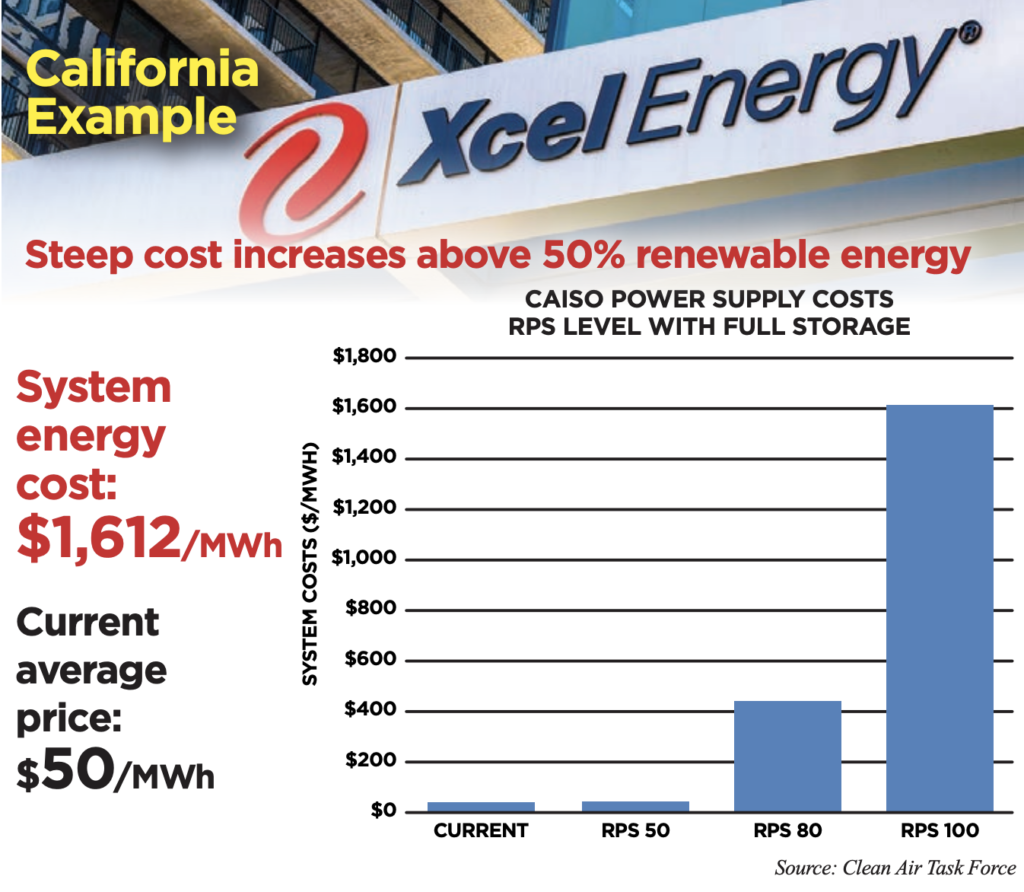Faulty math on energy
Governor Walz’s 2050 energy plan would increase household electricity costs to more than $15,000 per year.
Governor Walz and “progressive” members of the House of Representatives seem to think Minnesota can have electricity generated from 100 percent “carbon free” resources using only wind, solar, and battery storage technology and that the end result will be lower electricity costs for consumers.
However, a slide show produced by Xcel Energy and presented to the Midwestern Governors Association suggests Walz and House progressives couldn’t be more wrong. In reality, relying exclusively upon wind, solar, and batteries would cause the average Minnesota electricity bill to skyrocket.
The reason bills would increase so dramatically is that the price of using renewables increases exponentially after 50 percent. One particular slide revealed the enormous cost that would be incurred by using 100 percent renewable energy with battery storage in California. The average system cost of electricity would increase from about $50 per megawatt hour (MWh) today to $1,612 per MWh, or more than 32 times higher.
As unbelievable as it may seem, these costs would be conservative because they appear to be a wholesale cost, not a retail cost. This means the $1,612 per MWh figure does not include things that are normally added to the bill in retail prices of electricity such as transmission, distribution, utility profits, property taxes, etc.
What would this mean for families in Minnesota, if we assume that achieving a grid powered by 100 percent wind, solar, and batteries would have the same system cost as Xcel claims it would cost in California?
Taking the wholesale cost assumptions from Xcel’s slide show at face value and ignoring the factors in the retail costs, electricity prices for Minnesota families would be 11.4 times higher with 100 percent renewables and batteries than they are currently. For the average Minnesota household using 786 KWh per month, their average monthly bill would increase from $103 per month to $1,257—more than $15,091 per year.

It is important to stress that the wholesale cost of electricity using wind, solar, and batteries would be 50 times more expensive than the electricity produced by the Sherburne County coal units, which produce some of the lowest cost electricity in the country. However, Xcel Energy wants to shut them down decades before the end of their useful lifetimes.
Earlier this year, Governor Walz’s administration suggested the economics of nuclear power likely make it too expensive to be part of its plan to produce 100 percent of Minnesota’s electricity from carbon-free sources by 2050. Considering such a system would consume 22 percent of the median pre-tax household income in Minnesota, it’s clear they don’t know what they’re talking about.
If lawmakers truly believe climate change is an existential crisis, they must pull their heads out of the sand and work to lift Minnesota’s ban on new nuclear power plants, begin researching technologies like carbon capture and sequestration, and allow large hydro to qualify for carbon-free standards, immediately. Otherwise, they’re just living in a world of pure imagination.